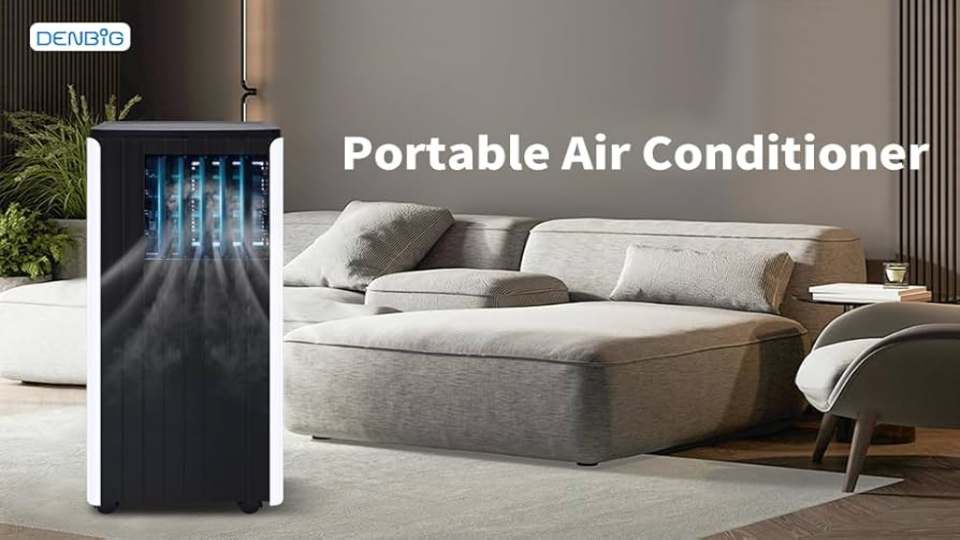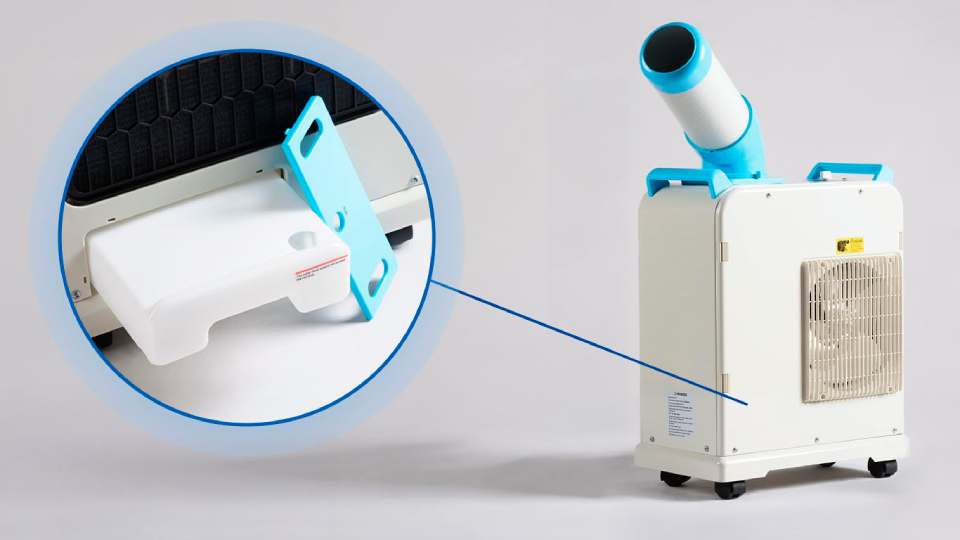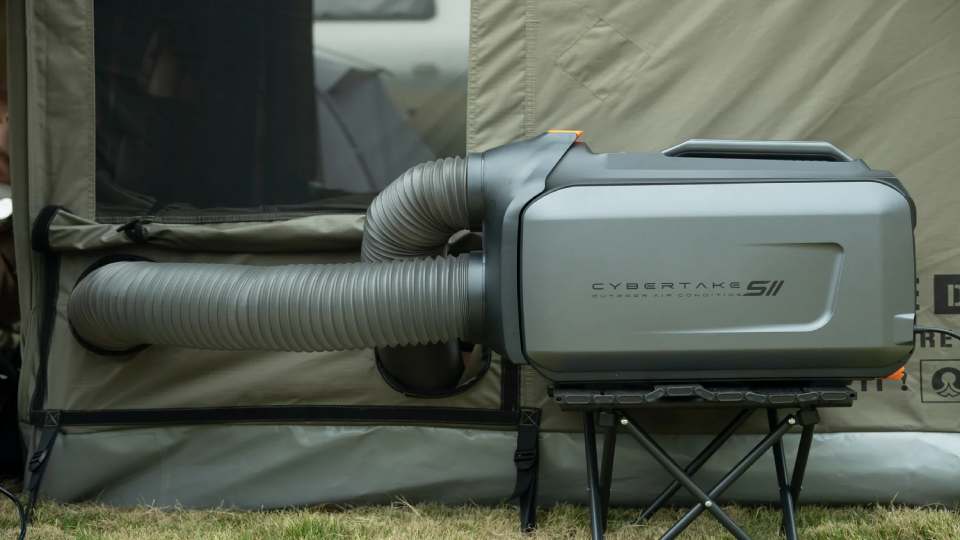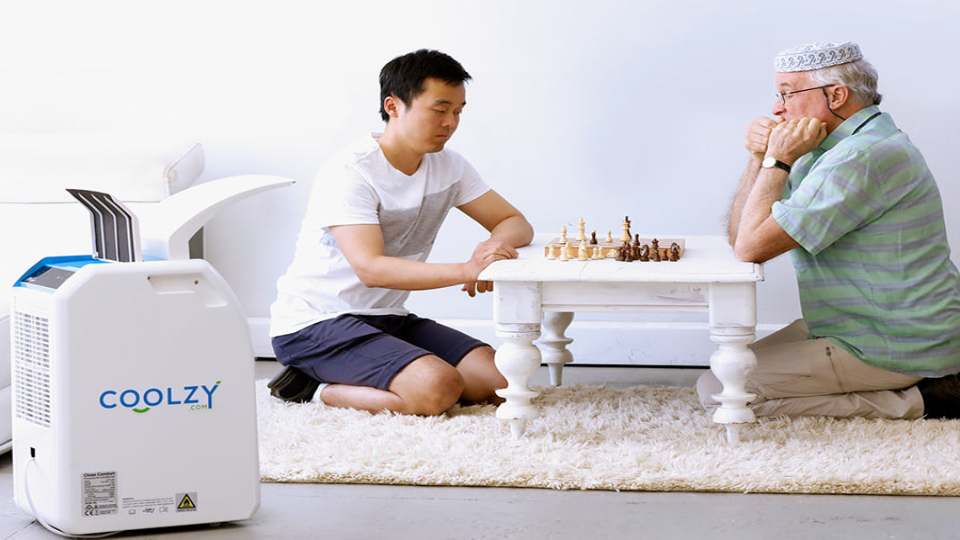Best Camping Air Conditioner: Stay Cool on Your Outdoor Adventures
Ever had a camping trip spoiled by a sweltering hot tent? We’ve all been there. While warm, sunny days are perfect for outdoor activities, trying to sleep in the heat is another story. A good portable air conditioner can change the experience, turning a stuffy shelter into a cool retreat. This guide is here to help you sort through the options and find the best camping air conditioner Australia for your adventures, so you can focus on enjoying the great outdoors, day and night.
5 Best Camping Air Conditioners in 2025
1. EcoFlow WAVE 3 Portable Air Conditioner
The EcoFlow WAVE 3 delivers 6,100 BTU cooling and 6,800 BTU heating, ensuring all-season comfort wherever you camp. With up to 8 hours of wireless use, fast 15-minute cooling, hassle-free setup with the insulated exhaust duct, and smart app control, it’s ideal for tents, caravans, or outdoor patios. Multiple charging options, including the WAVE 3 Add-on Battery, keep you powered on the go, while its 2-year warranty adds peace of mind.
Ecoflow Wave 3 Portable Air Conditioner
2.DENBIG Portable Air Conditioner
The DENBIG Portable Air Conditioner offers rapid cooling with a 1,500 BTU capacity, making it perfect for small spaces up to 50 sq.ft. Its multi-functional design includes both cooling and fan modes, providing customizable comfort while improving air circulation at 140m³/h. Compact and lightweight (20×10×10 inches) with a single-hand handle, it’s ideal for tents, RVs, vans, boats, or outdoor setups. Flexible power options allow use with household outlets or portable power stations, while quiet operation (≤52 dB) and energy-efficient R134A refrigerant keep your camping environment peaceful and eco-friendly.


3.Uninex Koolzone SAC1800 Portable Air Conditioner
The Uninex Koolzone SAC1800 is an industrial-grade portable air conditioner delivering 6,293 BTU cooling with a 1/2 ton capacity, suitable for indoor or outdoor use. ETL certified for safety and reliability, it uses eco-friendly R410A refrigerant and features a built-in evaporator that removes most condensate for hassle-free operation. With no assembly required, easy portability, and energy-efficient operation (approx. $0.09/hour), it’s ideal for workshops, tents, RVs, or outdoor events. Noise levels range from 60–62 dB, providing effective cooling without excessive disruption.


4. Cybertake Portable Air Conditioner
The Cybertake combines a Panasonic 48V compressor, smart inverter algorithm, and ultra-efficient DC system to cool spaces rapidly—up to 18℉ in just 5 minutes. It runs up to 10 hours on only 1 kWh, operates quietly at 38 dB, and supports multiple power sources, including batteries, solar panels, and car chargers. Lightweight (21.6 lbs), waterproof (IPX4), and compact, it’s perfect for tents, RVs, or small camping setups.


5. Coolzy-Pro Portable Air Conditioner
The Coolzy-Pro is a personal cooling solution ideal for tents, caravans, offices, or balconies. Using just 340W, it cools people rather than entire rooms, with three fan speeds, temperature control, and a remote. Lightweight at 37 lbs with wheels and handles, it works with batteries, solar inverters, or small generators, providing convenient, maintenance-free cooling wherever 120V power is available.


Factors to Consider When Choosing the Best Camping Air Conditioner for Your Trip
Choosing the best camping air conditioner depends on your camping setup, space, and power availability. Here are the key factors to guide your selection:
1. Cooling Capacity & Room Size
Portable camping ACs come with different BTU ratings, which determine how quickly and effectively they cool your space. Small tents or RV cabins typically need 3,000–6,000 BTU, while larger caravans or open camping areas may require 6,000–12,000 BTU. Picking a unit that matches your space ensures efficient cooling without draining your power source.
2. Power Source & Efficiency
Check how the unit is powered. Some camping air conditioners use mains electricity, while others work with portable power stations, batteries, or solar panels. Energy-efficient models save electricity, extend battery life, and keep you cool longer without frequent recharges—a crucial factor for remote or off-grid trips. Learn more about how portable air conditioners use electricityto plan your battery or solar setup.
3. Portability & Setup
Weight, size, and ease of installation matter when camping. Lightweight units with handles or wheels, plug-and-play setups, and minimal assembly make moving and positioning the AC hassle-free. Models with wireless or battery operation are ideal for tents, campers, or outdoor setups where space and mobility are limited. The EcoFlow Wave Portable Air Conditioner is a perfect example of this design philosophy.
4. Noise Level
For a comfortable camping experience, especially in tents or RVs, low-noise operation is essential. Look for units under 50 dB, or with “sleep mode” options, so you can enjoy a quiet night without compromising cooling performance.
5.Extra Features
Some camping ACs include smart controls, app connectivity, timers, automatic drainage, dehumidification, or directional vents. These features enhance comfort and convenience, letting you focus on enjoying your trip rather than adjusting the unit constantly.
Tips to Keep Cool While Camping (Without Wrecking Your Battery)
Once you’ve chosen the right unit based on these factors, here are some practical tips to maximize comfort and extend power when using a best portable air conditioners outdoor activities or portable AC:
1. Choose Energy-Efficient Models
Select a portable camping air conditioner with low power consumption or sleep modes. Units like the EcoFlow WAVE 3 Portable Air Conditioner or Cybertake S1 Pro are designed to provide efficient cooling while using less electricity, helping your battery last longer.
2. Optimize Placement
Position your AC in a shaded, well-ventilated area inside your tent, camper, or RV. Avoid direct sunlight on the unit, and ensure the exhaust hose is straight and unobstructed to improve cooling efficiency and reduce energy use.
3. Use Battery or Solar Options Wisely
If your unit supports batteries or solar panels, charge fully before use and monitor power levels. For longer trips, consider pairing your best camping portable air conditioner with expandable battery packs to avoid mid-trip power shortages.
4. Pre-Cool Your Space
Before heading to bed or starting a long rest, run the AC on high for a short period to quickly lower the temperature. Once the space is cool, switch to eco or sleep mode to maintain comfort while saving battery.
5. Minimize Heat Sources
Close tent flaps or RV windows during the hottest part of the day, and reduce the use of devices that generate heat. Reflective covers or shades on tents and RV windows can help keep the interior cooler, reducing the workload on your AC.
6. Vent and Circulate Air
Use fans to circulate cool air efficiently and direct airflow where it’s needed. Combining a portable camping AC with a small fan reduces energy consumption while maintaining an even temperature throughout your space.
By following these tips, you can enjoy a comfortable camping experience while extending battery life, making your best camping air conditioner in Australia last longer and perform at its best.
Conclusion
By following these tips and selecting the right camping air conditioner, you can enjoy a cool and comfortable outdoor experience, whether you’re in a tent, RV, or campervan. Consider factors like cooling capacity, energy efficiency, portability, and power options to find a unit that suits your camping style and preserves battery life. With smart placement and energy-saving strategies, even the hottest summer days can be enjoyable while camping.
*The brands referenced in this article are provided for informational purposes only and do not indicate any partnership with EcoFlow.
FAQs
What’s the most energy-efficient camping AC?
The most energy-efficient camping air conditioners are those designed with low-power consumption, smart inverter technology, and multiple operating modes like ECO or sleep mode. Models such as the Cybertake portable AC or EcoFlow units use minimal electricity while maintaining strong cooling performance. Choosing a unit compatible with batteries or solar panels further improves energy efficiency for off-grid trips. Always check the wattage, BTU output, and runtime per kWh to select a model that keeps you cool without draining power quickly, making your camping experience both comfortable and sustainable.
How heavy are portable camping air conditioners?
Portable camping air conditioners vary in weight depending on their cooling capacity and features. Lightweight units designed for tents or small RVs can weigh as little as 20–25 lbs, making them easy to carry and set up. Larger, high-capacity models may weigh 35–50 lbs or more, often including handles or wheels for portability. When choosing a camping AC, consider the weight in relation to how you’ll transport it—especially if you plan to hike or carry it long distances. Compact, portable designs make cooling more practical for outdoor adventures.
How to stop a tent from getting so hot?
Pick a shady, well-ventilated pitch and you’ll halve the problem before you unzip the tent: avoid direct sun, set up under trees or a shade structure, and raise a reflective tarp at least 30 cm above the tent to block heat while allowing airflow. Open vents and doors to create cross-flow, remove the rainfly in low-risk conditions and use the tent’s mesh panels so evening breezes can cool the interior. Put a reflective groundsheet under the tent, wait until dusk to pitch when possible, and carry a small battery-powered fan (or a fan run from a portable power source) for extra airflow; never cook inside the tent and stay hydrated. Practical planning and airflow beat fancy gadgets every time.